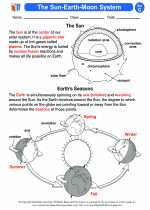Elliptical Galaxies
Elliptical galaxies are one of the three main types of galaxies, along with spiral and irregular galaxies. They are characterized by their smooth, featureless appearance and lack of obvious structure such as spiral arms. Elliptical galaxies are named for their elliptical shape, which can range from nearly spherical (E0) to highly elongated (E7).
Formation and Composition
Elliptical galaxies are primarily made up of older stars, with very little interstellar gas and dust. They are thought to form through the mergers of smaller galaxies, which results in a spheroidal or ellipsoidal shape. The stars in elliptical galaxies follow random orbits, unlike the more orderly rotation of spiral galaxies.
Classification
Elliptical galaxies are classified based on their ellipticity, ranging from E0 (spherical) to E7 (highly elongated). The luminosity of elliptical galaxies also varies, from giant ellipticals (gE) to dwarf ellipticals (dE). These classifications help astronomers understand the size, shape, and overall structure of elliptical galaxies.
Study Guide
- What are the three main types of galaxies?
- How are elliptical galaxies characterized?
- What is the primary composition of elliptical galaxies?
- How are elliptical galaxies thought to form?
- What is the classification system for elliptical galaxies based on?
Studying elliptical galaxies can provide valuable insights into the formation and evolution of galaxies, as well as the overall structure of the universe.
.◂Science Worksheets and Study Guides Seventh Grade. Our Solar System

 Activity Lesson
Activity Lesson
 Activity Lesson
Activity Lesson
 Worksheet/Answer key
Worksheet/Answer key
 Worksheet/Answer key
Worksheet/Answer key
 Worksheet/Answer key
Worksheet/Answer key
 Worksheet/Answer key
Worksheet/Answer key
 Vocabulary/Answer key
Vocabulary/Answer key
 Vocabulary/Answer key
Vocabulary/Answer key
 Vocabulary/Answer key
Vocabulary/Answer key
